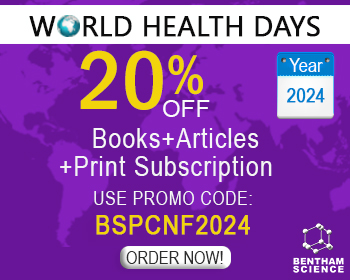Abstract
Background: Algae, tiny photosynthetic microorganisms are under investigation for commercial biofuels and biochemical production. Applications of bioactive compounds of algal origin are now increasing for food, feed, fodder, fibre, cosmetics, nutraceutical and pharmaceuticals. Recent years have witnessed a major thrust moving towards a sustainable, biobased economy using a biorefinery concept. The biorefinery concept is based on obtaining a broad spectrum of products such as biodiesel, bioethanol, biogas, jet fuels, and many value-added biobased products from renewable bioresources analogous to the petroleum refinery.
Methodology: The aim of this review is to provide an insight into the utilization of algal biomass for the production of bioactive compounds, algal cultivation systems, cell disruption techniques, challenges to algal bioactive compound extraction, and offer a way forward. According to this objective, we did a comprehensive search in all available electronic information resources like in Web of Science, Scopus, and Science Direct.
Results: The review summarizes representative bioactive compounds from algal biomass, indicating that these biological resources are an inexhaustible source of new molecules that often display unique structures and sometimes have very interesting pharmacological properties, such as antifungal, antibacterial, enzyme-inhibitory, and other activities. A better cultivation and cell disruption strategy have been suggested for a sustainable algal biorefinery system.
Conclusion: The paper reviewed different bioactive compounds like astaxanthin, DHA, EPA, vitamins and β-1,3 Glucan, etc. present in microalgae and their applications in pharmaceuticals and nutraceuticals development for human consumption along with major steps of algal bioprocessing, such as algal cultivation and cell disruption. Also, the production and role of several high-value compounds extracted from algal biomass in the treatment of various diseases along with the way forward to make algal-based biorefinery for bioactive compounds economically sustainable and viable have been discussed. However, research on various aspects of algal based bioactive compound extraction is in a nascent phase and requires bioprospecting of high yielding native algal species, development and deployment of mass cultivation strategies, process optimization for harvest and cell disruption techniques followed by efficient biomolecule extraction procedures to make algal biorefinery sustainable and commercially viable in nature.
Keywords: Microalgae, bioactive compounds, algal bioprocessing, biorefinery, pharmaceuticals, nutraceuticals.
[http://dx.doi.org/10.1038/aps.2012.110] [PMID: 22941288]
[http://dx.doi.org/10.1016/j.biotechadv.2016.10.005] [PMID: 27816618]
[http://dx.doi.org/10.1016/J.SJBS.2017.11.003] [PMID: 31048995]
[http://dx.doi.org/10.1016/j.fshw.2019.03.001]
[http://dx.doi.org/10.1016/j.cofs.2018.12.003]
[http://dx.doi.org/10.2174/1573407215666181219104518]
[http://dx.doi.org/10.1016/j.biortech.2019.01.104] [PMID: 30718075]
[http://dx.doi.org/10.1016/j.biombioe.2019.105398]
[http://dx.doi.org/10.2174/1573407210666140327212945]
[http://dx.doi.org/10.1016/j.fshw.2019.08.001]
[http://dx.doi.org/10.1016/j.copbio.2020.02.008] [PMID: 32171887]
[http://dx.doi.org/10.2174/1573407214666180727092555]
[http://dx.doi.org/10.1007/s10811-013-9983-9]
[http://dx.doi.org/10.1080/10408690590957188] [PMID: 16431409]
[http://dx.doi.org/10.1111/j.1365-2672.2008.03918.x] [PMID: 19191979]
[http://dx.doi.org/10.1080/10408410802086783] [PMID: 18568862]
[http://dx.doi.org/10.2174/1573407214666180327123118]
[http://dx.doi.org/10.2174/1573407214666181019124339]
[http://dx.doi.org/10.2174/138920112804724828] [PMID: 23072388]
[http://dx.doi.org/10.1016/j.jpba.2009.03.016] [PMID: 19375880]
[http://dx.doi.org/10.1007/s11157-010-9214-7]
[http://dx.doi.org/10.1016/j.egypro.2019.02.183]
[http://dx.doi.org/10.1016/j.biotechadv.2020.107545] [PMID: 32272160]
[http://dx.doi.org/10.1016/j.bcab.2020.101580]
[http://dx.doi.org/10.1016/j.cbpc.2006.05.007] [PMID: 16901759]
[http://dx.doi.org/10.1016/j.fuel.2019.115826]
[PMID: 810003]
[http://dx.doi.org/10.1038/ja.2014.118] [PMID: 25182484]
[http://dx.doi.org/10.22159/ajpcr.2016.v9i6.14507]
[http://dx.doi.org/10.1016/0043-1354(79)90249-5]
[http://dx.doi.org/10.1016/B978-0-444-59558-4.00001-2]
[http://dx.doi.org/10.1111/1541-4337.12227]
[http://dx.doi.org/10.1016/0144-4565(88)90057-1]
[http://dx.doi.org/10.1007/BF02161213]
[http://dx.doi.org/10.1038/s41598-018-23340-3] [PMID: 29311619]
[http://dx.doi.org/10.1023/A:1017560006941]
[http://dx.doi.org/10.1016/j.rser.2009.07.020]
[http://dx.doi.org/10.1038/srep20578] [PMID: 26838183]
[http://dx.doi.org/10.4155/bfs.10.44] [PMID: 21833344]
[http://dx.doi.org/10.1016/j.biotechadv.2017.09.009] [PMID: 28947090]
[http://dx.doi.org/10.1016/j.biortech.2012.10.099] [PMID: 23206809]
[http://dx.doi.org/10.1007/s00253-016-7301-6] [PMID: 26860938]
[http://dx.doi.org/10.1093/aobpla/plt026] [PMID: 23789055]
[http://dx.doi.org/10.3389/fpls.2016.00531] [PMID: 27200009]
[http://dx.doi.org/10.1016/j.synbio.2018.04.001] [PMID: 29900425]
[http://dx.doi.org/10.1111/1751-7915.12167] [PMID: 25223877]
[http://dx.doi.org/10.1051/ocl/2013030]
[http://dx.doi.org/10.1371/journal.pone.0144054] [PMID: 26658738]
[http://dx.doi.org/10.1038/s41598-018-27309-0] [PMID: 29892078]
[http://dx.doi.org/10.3390/ma11101986] [PMID: 30326602]
[http://dx.doi.org/10.1186/s13568-018-0540-4] [PMID: 29368055]
[http://dx.doi.org/10.1016/S0734-9750(03)00051-X] [PMID: 14499126]
[http://dx.doi.org/10.1016/j.biortech.2015.03.001] [PMID: 25777066]
[http://dx.doi.org/10.1016/j.biortech.2013.08.051] [PMID: 23994697]
[http://dx.doi.org/10.1016/j.biortech.2014.09.099] [PMID: 25446782]
[http://dx.doi.org/10.1021/jf8025875] [PMID: 19049289]
[http://dx.doi.org/10.1016/0022-1759(86)90496-5] [PMID: 3528294]
[http://dx.doi.org/10.3390/md16080283] [PMID: 30115823]
[http://dx.doi.org/10.1007/s00253-004-1647-x] [PMID: 15300417]
[http://dx.doi.org/10.1007/BF02949276]
[http://dx.doi.org/10.1016/S1369-5274(03)00064-X] [PMID: 12831899]
[http://dx.doi.org/10.1038/s41598-017-00979-y] [PMID: 28405002]
[http://dx.doi.org/10.1038/s41598-018-28064-y] [PMID: 29959357]
[http://dx.doi.org/10.1038/srep41215] [PMID: 28117410]
[http://dx.doi.org/10.1128/MMBR.47.4.551-578.1983] [PMID: 6420655]
[http://dx.doi.org/10.3390/md16010026] [PMID: 29329235]
[http://dx.doi.org/10.1155/2016/3164312]
[http://dx.doi.org/10.1016/j.biortech.2017.01.006] [PMID: 28107722]
[http://dx.doi.org/10.1007/s10811-011-9692-1]
[http://dx.doi.org/10.1155/2015/825203] [PMID: 26484353]
[http://dx.doi.org/10.1016/S0953-7562(09)80398-5]
[http://dx.doi.org/10.1533/9780857098689.2.287]
[http://dx.doi.org/10.1016/j.biortech.2012.10.135] [PMID: 23186688]
[http://dx.doi.org/10.1016/j.enconman.2010.01.015]
[http://dx.doi.org/10.1038/s41598-018-27894-0] [PMID: 29950688]
[http://dx.doi.org/10.1007/s00253-003-1441-1] [PMID: 14566431]
[http://dx.doi.org/10.1016/j.procbio.2008.06.012]
[http://dx.doi.org/10.1016/j.egyr.2019.08.076]



























